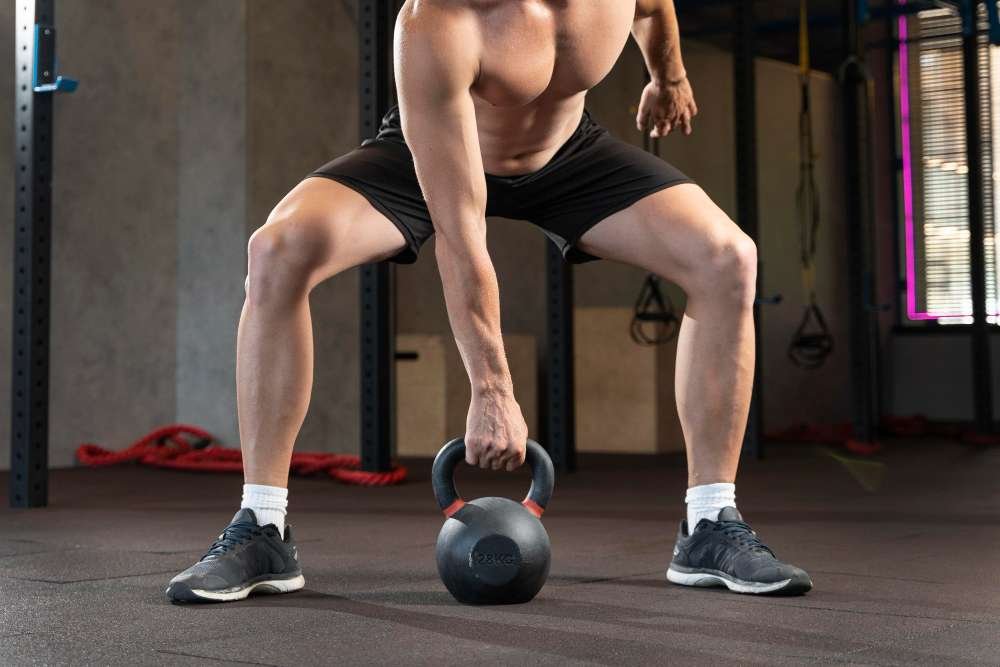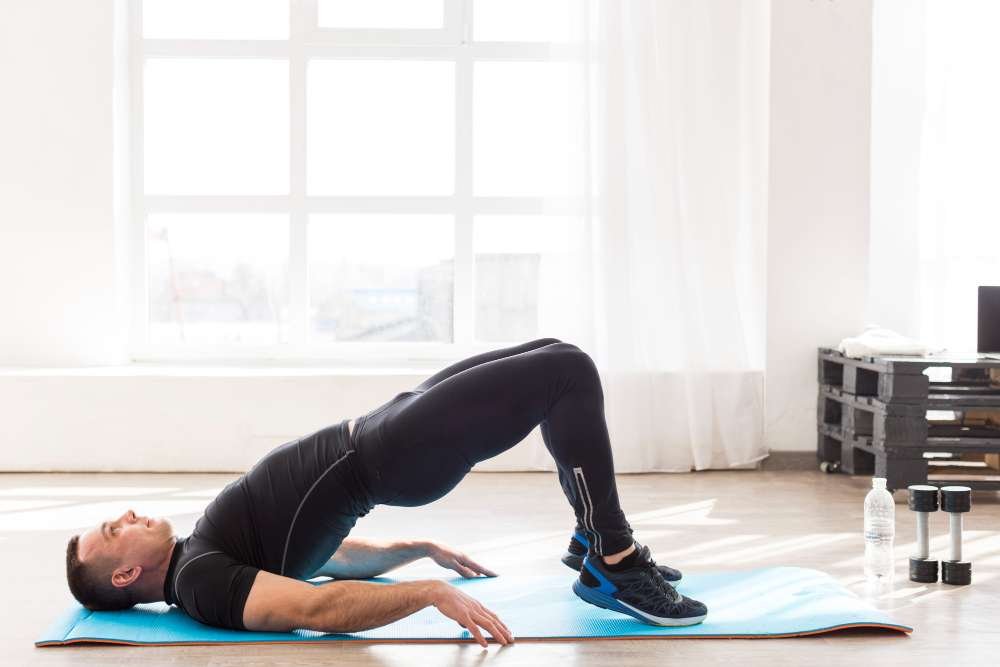Welcome to “Physical Fitness Care,” where you can get in the best possible physical shape. Learn how to develop a well-balanced lower body by focusing on the often-overlooked lower glutes. This thorough book will cover lower glute workouts, giving you the knowledge you need to have a stronger, more sculpted lower body. Join us on this journey to maximize the potential of your lower glutes, regardless of your level of fitness.
Table of Contents
- Introduction
- Understanding the Lower Glutes
- The Importance of Targeting Lower Glutes
- Common Misconceptions
- Warm-Up Exercises
- Bodyweight Lower Glute Exercises
- 6.1. Glute Bridges
- 6.2. Donkey Kicks
- 6.3. Fire Hydrants
- 6.4. Clamshells
- Lower Glute Exercises with Resistance Bands
- 7.1. Banded Squats
- 7.2. Standing Kickbacks
- 7.3. Lateral Band Walks
- 7.4. Bulgarian Split Squats with Bands
- Dumbbell and Kettlebell Lower Glute Exercises
- 8.1. Romanian Deadlifts
- 8.2. Sumo Squats
- 8.3. Goblet Lunges
- 8.4. Kettlebell Swings
- Machines for Lower Glute Development
- 9.1. Leg Press
- 9.2. Hack Squat Machine
- 9.3. Hip Thrust Machine
- Combining Lower Glute Exercises
- Proper Form and Technique
- Creating a Lower Glute Workout Routine
- Nutrition and Recovery
- Tracking Your Progress
- Conclusion
- FAQs
Introduction
The muscular group in your lower body includes the lower glutes, also referred to as the gluteus maximus in science. These muscles may be developed and strengthened, which not only makes your rear look nicer but also helps with posture, injury prevention, and athletic performance.
Understanding the Lower Glutes
The upper, middle, and lower glutes make up the three separate portions of the gluteus maximus, the largest muscle in the human body. Although the upper glutes frequently receive more attention in the fitness community, neglecting the lower glutes can result in a physique that is out of balance.
The Importance of Targeting Lower Glutes
A balanced and toned lower body can only be attained by focusing on the lower glutes. Strong lower glutes support the lower back and keep the pelvis stable, which reduces lower back pain and improves overall athleticism.
Common Misconceptions
Let’s dispel a frequent misconception about spot removal before we begin the exercises. Spot-reducing fat from a particular location is not possible. Although lower glute exercises can tone and strengthen these muscles, they won’t actually cause the lower glutes to burn fat. To reduce body fat, it’s important to follow a well-rounded exercise regimen that incorporates both cardio and a healthy diet.
Warm-Up Exercises
Warming up your muscles is essential before any lower glute exercises. Dynamic hip and glute stretches after a quick aerobic warm-up can help prevent injuries and enhance exercise performance.
Bodyweight Lower Glute Exercises
6.1. Glute Bridges

Lower glute activation is a great place to start with glute bridges. Knees bent and feet flat on the floor, lie on your back. Squeeze your lower glutes at the peak of the movement as you raise your hips off the ground.
6.2. Donkey Kicks
Donkey kicks are an entertaining and useful exercise for working the lower glutes. Starting on your hands and knees, raise one leg until the foot is facing the ceiling while keeping the leg bent at a 90-degree angle.
6.3. Fire Hydrants
Fire hydrants aim for the outer thighs and lower glutes. Begin on your hands and knees, lifting one leg out to the side while maintaining a 90-degree bent knee.
6.4. Clamshells
The outer glutes can be effectively targeted using clamshells. Lay on your side with your feet together and your knees bent at a 90-degree angle. Open and close your knees while keeping your feet in contact.
Lower Glute Exercises with Resistance Bands
Your lower glute exercises may become more challenging if you use resistance bands. Let’s look at some useful exercises you may do with this adaptable equipment.
7.1. Banded Squats

Banded squats provide resistance throughout the whole range of motion and work the lower glutes. Standing with your feet shoulder-width apart, place a resistance band immediately above your knees. Pushing your knees outward against the resistance as you squat down can more efficiently work your lower glutes.
7.2. Standing Kickbacks
Standing kickbacks are excellent for targeting the lower glutes. A resistance band should be fastened to a reliable anchor point and wrapped around your ankle. Kick your leg backward while keeping the band taut. Stand facing the anchor point.
7.3. Lateral Band Walks
Lateral band walks are fantastic for toning your glute sides, notably the lower part. Just above the knees, wrap a resistance band over your thighs. Move to the side in baby steps while maintaining tension in the band.
7.4. Bulgarian Split Squats with Bands
Lean back on a bench or other stable surface with one foot elevated, then wrap a resistance band around your shoulders. Squats should be done with your chest raised and back straight. This exercise simultaneously works the quadriceps and lower glutes.
Dumbbell and Kettlebell Lower Glute Exercises
You can use dumbbells and kettlebells to add resistance to your lower glute exercises. Here are some workouts you can add to your schedule:
8.1. Romanian Deadlifts
While maintaining your back straight, hold a dumbbell or kettlebell in front of your thighs and flex at the hips to lower the weight toward the ground. Lower glutes and hamstrings are the primary muscles targeted by this workout.
8.2. Sumo Squats
Hold a dumbbell or kettlebell between your legs while standing with your feet wider than shoulder-width apart. Keep your chest up as you squat down, focusing on using your inner thighs and lower glutes.
8.3. Goblet Lunges
Lunge forward while keeping a dumbbell or kettlebell close to your chest. To activate the lower glutes when you lunge, push off your front heel.
8.4. Kettlebell Swings

Kettlebell swings are a dynamic workout that works the lower glutes as well as the complete posterior chain. Swing the kettlebell between your legs, then raise it to chest height while you quickly drive your hips forward.
Machines for Lower Glute Development
Your lower glute exercises can be more varied by including gym equipment. The following equipment can aid in the development of your lower glutes:
9.1. Leg Press
You can load a lot of weight on the leg press machine, which makes it perfect for strengthening your lower glutes. Press through your heels and resist letting your knees buckle to maintain appropriate form.
9.2. Hack Squat Machine
The lower glutes and quadriceps are the focus of the hack squat machine. To effectively engage your lower glutes, adjust the machine to your level of comfort and perform slow, controlled repetitions.
9.3. Hip Thrust Machine
A specific piece of equipment called a hip thrust machine is used to isolate and strengthen the glutes, with an emphasis on the lower glutes. Place the proper weight on the machine, then while seated, lift your hips.
Combining Lower Glute Exercises
Combining different exercises from the aforementioned areas will help you design a lower glute workout plan that is well-rounded. An example exercise to get you started is as follows:
- Squats with bands: 3 sets of 12–15 reps
- Deadlifts: three sets of 10–12 repetitions
- 3 sets of 15 kickbacks each for the legs while standing
- Walks with a lateral band: two sets of 20 steps each
- 3 sets of 12–15 reps of hip thrusts on the hip thrust machine.
Remember to adjust the weights and repetitions based on your fitness level and goals.
Proper Form and Technique
No matter which lower glute exercise you select, good form is essential. In order to maximize your results and reduce the chance of injury, have a decent posture, activate your core, and concentrate on the mind-muscle connection.
Creating a Lower Glute Workout Routine
Think about your fitness level, the equipment you have access to, and your goals when developing an efficient lower glute workout plan. To achieve a well-rounded routine, blend bodyweight, resistance band, dumbbell or kettlebell, and machine movements.
Nutrition and Recovery

In addition to a healthy diet and enough rest, developing strong lower glutes requires both. Make sure you’re consuming enough protein and other nutrients to encourage muscle growth and don’t forget to take some time off between workouts to let your muscles recuperate.
Tracking Your Progress
Take pictures of your progress, gauge your strength and endurance, and tweak your routine as necessary to monitor your progress. To observe changes in your lower glutes, consistency is essential.
Conclusion
For a balanced and powerful lower body, lower glute workouts must be a part of your training regimen. Targeting the lower glutes will help you achieve your goals, whether they be for enhanced athletic performance, better posture, or aesthetics.
FAQs
- How often should I train my lower glutes?
- Aim for 2-3 lower glute workouts per week, with at least one day of rest between sessions.
- Can lower glute exercises help with lower back pain?
- Yes, strengthening the lower glutes can provide better support for the lower back and alleviate pain.
- Do I need equipment to work my lower glutes?
- No, there are effective bodyweight exercises you can do to target the lower glutes, but adding resistance can enhance results.
- How long until I see results in my lower glutes?
- Results vary, but with consistent training and a balanced diet, you may notice improvements in 4-6 weeks.
- Should I consult a fitness trainer before starting a lower glute workout routine?
- It’s advisable, especially if you’re new to exercise or have any existing medical conditions. A trainer can help you create a safe and effective plan.
It’s time to start putting your knowledge of lower glute workouts into practice and achieving the strong, defined lower glutes you’ve always desired. On your quest for a healthy lower body, don’t forget to be consistent, keep safe, and have fun!

